Chronic Fatigue Syndrome (CFS) sufferers describe symptoms of severe exhaustion, weakness, muscle pain and fatigue. But why, and what is science revealing about the underlying causes of the condition? We talk to a researcher who is probing the genetic links to the syndrome, a clinician with evidence that the muscles of patients accumulate acid when they exercise and a pathologist with post-mortem evidence of inflammation in the nervous systems of CFS sufferers. Also, in the news this week, the ants that help a pitcher plant to catch its lunch, the missile-hurling zoo chimp who plans his attacks in advance, and does non-coding DNA hold the key to how chromosomes recognise their opposite number? Plus, the cause of cheesy feet goes under the microscope in our Question of the Week...
In this episode

- Cheeky Monkey
Cheeky Monkey
We tend to think that planning ahead is a purely human activity, but the antics of a chimp called Santino in Furuvik Zoo in Sweden are challenging that assumption. three years ago Santino hit the headlines when researchers found that he was gathering stones into piles before the zoo opened in  the morning, ready to pelt visitors. Not only is this rather cheeky, but it looked like he was actively planning ahead for the day's assaults.
the morning, ready to pelt visitors. Not only is this rather cheeky, but it looked like he was actively planning ahead for the day's assaults.
Some scientists argued that Santino wasn't actually planning ahead, but instead was just repeating what he had learned to do, as a result of his time in the zoo. But now new observations from Mathias Osvath and Elin Karvonen, published in the journal PLoS One this week, suggest that Santino is indeed a forward-planning, as well as a cheeky, monkey - or rather, chimp, before any pedants complain.
The researchers watched groups of visitors to Santino's enclosure, and saw him threatening them with stones. Understandably, they backed off, but when they went closer again, Santino was holding stones but just playing it cool, doing his chimp thing. But then he suddenly threw a stone at the visitor group, as if he had been planning to trick them.
Osvath and Karvonen also saw Santino hide stones under handfuls of hay or behind logs in prime spots for throwing, so visitors wouldn't spot the missiles as they approached - suggesting that he knew visitors would come and was planning to attack them.
The scientists argue that Santino didn't hide stones like this before 2010, and that it shows that he is forward-planning. Sceptics still aren't entirely convinced, arguing that it's hard to interpret his behaviour to this degree, that he might be hiding the stones for another reason, and that he's just one chimp that may not be representative of the rest of the species. So while these observations hint at the fact that at least one chimp out there may be planning for the future, there's a lot more work to be done to figure out whether chimps - or any other animals - can actively plan ahead. Though even if they can, they're unlikely to be buying into a pension plan any time soon.

01:56 - What is Chronic Fatigue Syndrome?
What is Chronic Fatigue Syndrome?
with Dr. Esther Crawley, Bristol University
Kat - Let's start by just really going back to basics, what exactly do we mean by chronic fatigue syndrome? What is this disorder?
Esther - Well, patients with chronic fatigue syndrome are first of all very disabled by very significant and difficult fatigue, and then they usually have a variety of other symptoms. So, one of the most common symptoms for example is headaches which are very difficult and often constant. They often have muscle and joint aches and pains. I mainly see children and teenagers and they often start off by feeling very, very sick, particularly first thing in the morning and dizzy, and sore throats and swollen lymph nodes are also some of the symptoms. One of the problems with this illness is it comes and goes and it affects people differently in different days. It can cycle by days or by weeks, or by months. It's a very, very difficult and disabling condition.
Kat - Who normally gets this disorder because I remember when it sort of rose to prominence, a couple of decades ago, people referred to it as "yuppie flu", but I understand that's not actually really the sort of people that it affects?
Esther - Well, it can affect everybody. It tends to be more common in women. In fact, it tends to be more common in those of lower socio-economic class, so more deprived families. And there's reasonable evidence now that it's also, certainly in this country, it's more common in ethnic minorities. And you can look for this condition everywhere and every country that you look for it, you're going to find it, and the poorer the country, the more common it seems to be. So, in fact, it's quite the reverse of yuppie flu. It's an illness of social deprivation not of wealth. It's just the yuppies, the rich people are more likely to be successful in seeking healthcare.
 Kat - And what sort of healthcare is available? There's no medical treatment. What sort of treatments or interventions might be available for it at the moment?
Kat - And what sort of healthcare is available? There's no medical treatment. What sort of treatments or interventions might be available for it at the moment?
Esther - Well, there are no magic pills for it at the moment. There are some medications that help with pain and there are some medications that some patients find helpful with sleep. But mainly, treatment focuses on improving quality of sleep and improving activity and exercise in a very, very gentle way to get patients back to doing the things they want to do.
Kat - What's actually causing CFS? What makes someone develop this disorder?
Esther - We don't know the cause is and I think it's really important to start at the beginning of your programme by saying it's quite likely that it's not just one illness. Certainly, all the research in adults have shown that there's probably between 3 and 5 different types of illness that present with different groups of symptoms. So it may well be that fatigue and the symptoms I described might be the sort of end pathway. In children, we've also described between 3 and 4 different types of illness.
And so, what do we know about it? Well, we know that in many people, it's triggered off by an infection and some research has shown that it's the severity of the initial infection, rather than the actual type of infection, that's important.
But we also see a similar problem with fatigue after other types of insults. So for example, we're quite interested in what happens to patients after they have treatment for cancer. Also, we quite often see it in other illnesses. So, if you get very, very ill with diabetes for example, quite a lot of children after that develop a very similar looking illness.
So, I think that you need a big hit, but also, there's good evidence to show that in both children and adults, people are what we call 'genetically vulnerable'. So you're probably born with genes that make you vulnerable to fatigue and then you need an environmental insult to set it all off.
Kat - What kind of evidence do you have that there may be a genetic component to this?
Esther - There's different types of studies and the most convincing are twin studies. Interestingly, it looks like children are more genetically vulnerable than adults. So, if you're monozygotic twins, if you're identical twins and one of you gets it, you're much more likely that the other one will get it than if you're dizygotic, where you're only going to share half the DNA.
Kat - So basically, if you develop it as a child, it's more likely that it had a stronger genetic component to it.
Esther - Yes, so you only needed 1 or 2 viruses and then you set the whole thing off whereas as an adult, it looks like probably, you need to have the genes and then you need other things. So for example, we know that in adults, if you're depressed in your 40s, you're more likely to get it in your 50s, and that just doesn't seem to be true in children. So in adults, you need a variety of things together at the same time as well as the infection to set the whole thing off.
Kat - What do you think is going on with the infection? You talked about someone having an infection. It doesn't matter what's infected them. Do we have any clues about what's going on in the immune system?
Esther - Well, there are a lot of studies that have looked at the immune system and it's quite difficult to interpret exactly what's going on. I mean, clearly people with chronic fatigue syndrome, when you look at the immune system, it seems to be very different to controls. It's difficult to interpret because there are also lots of other differences going on. So for example, they're more sedentary, so they're not doing as much exercise as healthy controls. I mean, we believe the way forward is by doing very, very large studies, looking at the genetic material from thousands and thousands of patients. Of course you need very large studies because there are different types of illness and looking at blood in a large number of patients, but also, we're using longitudinal cohorts so, looking at DNA and blood, and also other factors before people get ill, to try and work out what the causes are. And also, what we call the maintenance factor, so what keeps you sick.
Kat - So if you think you can understand some of the pointers that might be causing it or indicating that it's about to happen, do you think you could help prevent people developing CFS in the first place?
Esther - Well I mean, I think that's why we're looking at it and also, we don't have any medical treatments. So, understanding more about the causes might help us develop that. But I think there's other things that you can do as well, so we're quite interested in what's called early intervention studies. So, if you - for example in children - if you can identify children as they start to become unwell with this illness, then what teenagers tell us is, if they get the right advice very early on, they believe they could stop it becoming a long-term illness. So I think there's definitely a role for looking at early intervention studies in both teenagers and there's also studies in Bristol going on in adults, seeing if you can prevent it becoming a long time problem.
Kat - What sort of interventions are you talking about in these cases?
Esther - Well, the teenagers tell us that the most useful thing that they wish they'd known right at the beginning is advice about sleep. So, what happens when you get chronic fatigue syndrome is you feel very, very awful and very, very tired, and instinctively, when you feel tired, you lengthen your sleep. And so, a lot of teenagers end up sleeping for between 12 and 20 hours. The problem with lengthening the time that you're asleep is that the quality of your sleep deteriorates, so you feel more tired, and so you lengthen it again, and that reduces the quality.
You also end up with change in your wake up time and changing your wake up time changes the cortisol that's released in the brain. So cortisol is a type of steroid and for those of us without chronic fatigue syndrome, we usually get a cortisol hit in the morning and that helps us feel awake.
If you're constantly changing your wake up time, then we think that that's one of the reasons why it ends up being quite flat in teenagers with chronic fatigue syndrome. So we give quite simple advice about keeping your sleep at night very short and making sure you always wake up at the same time. Teenagers often find that it really makes a big difference to them and what they say is that they wish they'd had that advice very early on because their view is that it prevent them getting as sick as they get.
Kat - It sounds absolutely fascinating with a disease that's extremely complex. So, that's Esther Crawley from the University of Bristol. Thank you.
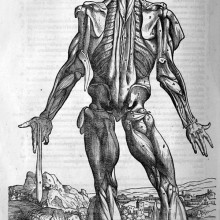
10:16 - Looking at Muscle Cells in Chronic Fatigue Syndrome
Looking at Muscle Cells in Chronic Fatigue Syndrome
with Professor Julia Newton, Newcastle University
MJulia - I'm actually a geriatrician by training. My clinical work focuses on patients with blackouts and falls, generally in older people.
Chris - So, what's the association between going from working with people who were falling over and feeling very faint to chronic fatigue syndrome?
Julia - Well, the common thing is blood pressure regulation and I'm particularly interested in the autonomic nervous system, so that's the subconscious nervous system that controls things like your respiration, your heart pumping, your bowels, and your bladder working. The particular area of that that interests me is blood pressure. So the head of steam that keeps the blood pumping around your body and if that doesn't happen effectively enough and your blood pressure drops, at the extreme end of things, you'll black out and at the more subtle end of things, then not enough blood gets to - not only your brain - but your heart, your muscles, and the other organs, and that's what I believe leads to the symptom of fatigue.
Chris - So, how did you make that association in the first place?- that you've got this cohort of old people who very frequently do get problems with their blood pressure going up and down in ways it shouldn't. How did you link that to the group of people who have this entity, chronic fatigue syndrome?
Julia - It's really talking to your patients actually and it became clear having seen patients with blackouts and falls for a number of years that, actually, they were experiencing symptoms that were very familiar to me from seeing patients with fatigue associated diseases. So we set about quantifying how much fatigue patients with blackouts were experiencing and lo and behold, they actually had a lot more fatigue than you would've imagined. And then if we treated their blackouts and made the blood pressure drop less, their fatigue appeared to be less. So, it looked like there was a spectrum of disease at the extreme end with patients with blackouts and at the more subtle end, patients who were just experiencing the symptom of fatigue. We then went to patients with chronic fatigue syndrome and other fatigue associated diseases, and began to think about whether or not they might be experiencing more blackouts than we would've anticipated. And when we actually asked patients, lo and behold, yes, the blackouts were much more common than we would've expected in patients with fatigue associated diseases.
Chris - But lots of old people have blackouts. They don't all have the other manifestations of chronic fatigue, so are we dealing with two different things or is there an area which is an overlap between the two different conditions? They both have a sort of common origin in terms of the blood pressure problem.
Julia - I think that that's absolutely right. I think what we're seeing is an underlying pathophysiological phenomena that is common to the two diseases.
Chris - And if you do some tests, can you see very characteristic similarities between the changes that happen in the blood pressure control of the people with chronic fatigue and elderly people who have these problems from time to time?
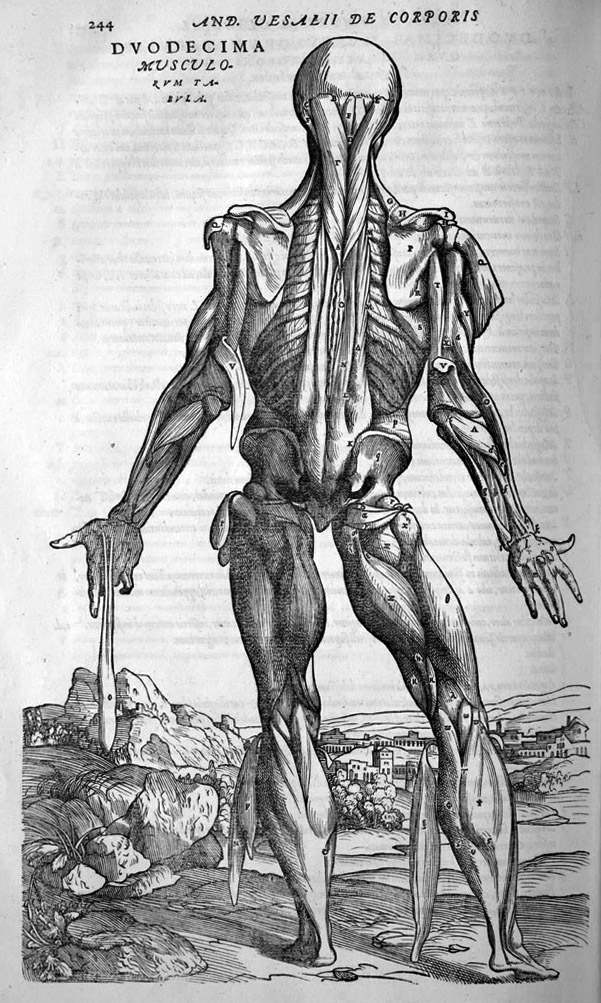 Julia - We tend to find that blood pressure drops quite precipitously when people stand up. So, what I think is it's the physiological stress of standing that is a problem in patients with both falls and blackouts and fatigue associated problems. When we stand up, 700 mls of blood drops into our legs, so to try and compensate for that, there's a microsecond response, trying to push your blood pressure up to where it needs to be which is your head. To do that, we make our heart go a little bit faster and our peripheral blood vessels constrict and if that doesn't happen fast enough, that means that we're not getting enough blood to where it needs to be.
Julia - We tend to find that blood pressure drops quite precipitously when people stand up. So, what I think is it's the physiological stress of standing that is a problem in patients with both falls and blackouts and fatigue associated problems. When we stand up, 700 mls of blood drops into our legs, so to try and compensate for that, there's a microsecond response, trying to push your blood pressure up to where it needs to be which is your head. To do that, we make our heart go a little bit faster and our peripheral blood vessels constrict and if that doesn't happen fast enough, that means that we're not getting enough blood to where it needs to be.
Chris - So if you ask groups of patients with chronic fatigue if they have these symptoms, what fraction of them will say, "Yes, I do suffer faints and blackouts" and that kind of thing?
Julia - If we actually ask them about symptoms when they stand up, we've shown that almost 90% of patients with chronic fatigue syndrome will have symptoms when they stand up of light-headedness and dizziness, and when we actually ask people about blackouts then 56% of patients with chronic fatigue syndrome/ME will describe a history of loss of consciousness.
Chris - What's actually going on in the muscles of people who are suffering with these changes in blood flow? Because if you've got a change in blood pressure, you're continuously escalating and reducing blood flow and perfusion to muscles which presumably makes their metabolism hard for the muscle cells to control?
Julia - Absolutely and that's one of the things that we've been studying here in Newcastle. We've done some MRI-based studies now where we've had patients with chronic fatigue syndrome ME and fatigue associated other diseases, and we've had them exercising in the MRI scanner. Using that technology, we've been able to show that patients with fatigue accumulate lots of acid within their muscles when they exercise and have difficulty getting rid of that acid from their muscles when they finish exercising. The next step with those studies are some laboratory based studies. So, we've begun to take cells from muscle biopsies in patients with CFS/ME and grow those muscle cells in the laboratory. So, these cells aren't being influenced by anything else within the human. They're then exercised to a known amount of exercise to see how they respond, and we've developed something called a nanosensor technology that will put small nanosensors across the cell wall of the muscle cells without destroying the cell, and then these nanosensors will fluoresce at various different pHs within the cells as the cells exercise.
Chris - And that's going to enable you to see these fluxes in acid, the accumulation or loss of acid, according to how the blood flow's changing. How do you know though that the muscle changes you're seeing are downstream of a nerve problem and not just two independent things which are both just characteristic of people with chronic fatigue?
Julia - That's a really good question, one that I get asked all the time. Is this just because patients with fatigue aren't exercising and they become what's called deconditioned? And that's why these laboratory experiments are so important, because these cells can't be influenced by deconditioning and the MRI studies have allowed us to show that the severity of the acid accumulation is directly related to the degree of abnormality with the autonomic nervous system. What that actually means we still need to explore in more detail, and whether it's just a problem of vascular run off, i.e. the blood vessels are not working well enough to get rid of the acid as the muscles exercise, or whether or not it's a problem of the transporters on the cell walls of muscle cells that are actively engaged in getting rid of acid from the cells, and we know that a number of those are under the control of the autonomic nervous system. So, we do need to do more experiments to see where the abnormality lies and therefore, where we could target treatments that would be of benefit to the symptoms experienced by patients.
Chris - And based on these experiments in the muscle cells, can you manipulate the outcome? Can you reverse it?
Julia - Well, we've got very exciting pilot data now that suggests that yes, we can. When we've used a number of medications in the laboratory, so taking the cells in the test tube and seeing whether we can reverse the acid that accumulates within the cells then yes, we can. So, I would say at the moment, we're in a very optimistic place. That if we begin to tease out these pathways of metabolism that we can begin to look at identifying specific abnormalities that we could direct drugs at, and that's part of what we're aiming to do with the Action for ME fellowship that we've been awarded.

19:09 - Carnivorous plants team up with ants and share spoils
Carnivorous plants team up with ants and share spoils
Scientists have discovered the first example of an ant-plant tag-team that works together to provide food for  both.
both.
The plant is a member of the Nepenthes family, which characteristically use liquid-filled pitchers to trap and digest insects that tumble in. And as these unfortunates are consumed, the nutrients locked up inside them are absorbed, enabling the plants to thrive in impoverished soils.
But one species found in the rainforest of Borneo, Nepenthes bicalarata, appears to have taken things a step further. It recruits an army of (Camponotus schmitzi) ants that help to defend the plant, ambush prey, clean up the pitcher traps and, we now know, share in the food spoils.
The plant provides barracks for its resident defense force in the form of hollow structures called dormatia that are sited close to the pitchers. The ants are also rewarded with a sugar meal dispensed from "field kitchen" nectaries within the pitchers.
In return, the ants ambush passing insects, including other ant species, clean away fungal deposits from the necks of the pitchers to keep them slippery and fight off herbivores trying to make a meal of the plant itself.
What's really surprising though, is that the C. schmitzi ants, which appear to be uniquely associated with this pitcher species, also eat the nitrogen-rich prey that tumbles into the trap.
This sounds like bad news for the plant, but by doing so, and then contributing their own faeces and carcasses into the pitchers, the ants are effectively substituting their own superior digestive systems for the plant's less-effective one, dramatically improving the efficiency of nutrient release from the prey items.
At the same time, by retrieving bulky prey items from the traps, the ants also help to prevent a build up in the pitcher fluid of ammonia and other putrefaction products that could knock out the bacterial communities that also live there and help in the food-breakdown process.
This discovery, which is the work of University of Montpellier II researcher Vincent Bazile and his colleagues and published this week in the journal PLoS One, is the first description of a carnivorous plant and ant species working together in this way.
The team compared the growth, nitrogen content and trapping success of Nepenthes bicalcarata plants with and without ant colonisers. The results were clear: plants colonised by the ants had signficantly larger leaves and bigger pitchers containing twice as much prey biomass. Nitrogen levels in the plant were also three times greater in ant-colonised specimens, with up to 75% of it coming via the ants.
According to the researchers, "this mixed strategy represents an outstanding adaptation for the exploitation of nutrient-poor soils and is, to our knowledge, unique in the plant kingdom."

22:58 - Can chimps plan for the future?
Can chimps plan for the future?
We tend to think that planning ahead is a purely human activity, but the antics of a chimp called Santino in Furuvik Zoo in Sweden are challenging that  assumption.
assumption.
Three years ago Santino hit the headlines when researchers found that he was gathering stones into piles before the zoo opened in the morning, ready to pelt visitors. Not only is this rather cheeky, but it looked like he was actively planning ahead for the day's assaults. Some scientists argued that Santino wasn't actually planning ahead, but instead was just repeating what he had learned to do, as a result of his time in the zoo.
But now new observations from Mathias Osvath and Elin Karvonen, published in the journal PLoS One this week, suggest that Santino is indeed a forward-planning, as well as a cheeky, monkey - or rather, chimp (before any pedants complain).
The researchers watched groups of visitors to Santino's enclosure, and saw him threatening them with stones. Understandably, they backed off, but when they went closer again, Santino was holding stones but just playing it cool, doing his chimp thing. But then he suddenly threw a stone at the visitor group, as if he had been planning to trick them.
Osvath and Karvonen also saw Santino hide stones under handfuls of hay or behind logs in prime spots for throwing, so visitors wouldn't spot the missiles as they approached - suggesting that he knew visitors would come and was planning to attack them.
The scientists argue that Santino didn't hide stones like this before 2010, and that it shows that he is forward-planning.
Sceptics still aren't entirely convinced, however, arguing that it's hard to interpret his behaviour to this degree, that he might be hiding the stones for another reason, and that he's just one chimp that may not be representative of the rest of the species.
So while these observations hint at the fact that at least one chimp out there may be planning for the future, there's a lot more work to be done to figure out whether chimps - or any other animals - can actively plan ahead. Though even if they can, they're unlikely to be buying into a pension plan any time soon.

25:51 - Boosting Brown Fat for Weight Control
Boosting Brown Fat for Weight Control
with Andrew Whittle, Institute of Metabolic Science, Cambridge
This week, scientists at Cambridge University have identified a signal that controls the activity of brown fat - that's a special kind of adipose tissue that's used to generate heat in the body by burning calories, and it's thought that boosting the activity of this brown fat could help people to lose weight. So people think it could be a very important therapeutic target.
Dr. Andrew Whittle is from the Metabolic Research Laboratory at Cambridge University and he's with us to tell us about this piece of work, published this week in the journal Cell.
Chris - So fats aren't all made equal then? We're not just one blob of adipose? There are different types of fat that do different jobs.
Andrew - There's definitely not just one type of fat, no. And we've known for a long time that in small children, small babies, and also small animals like mice, you have this other type of fat which isn't the white fat that stores all the fat. But instead, it looks brown in appearance because it has lots of these mitochondria, the powerhouses of the cell. And it was thought for a long time this wasn't present in adult humans. But research over recent years - thanks to new imaging techniques - allowed us to find and locate active depots of this brown fat in adult humans as well.
Chris - And where do you find it?
Andrew - Very much in a similar location to where you find it in small animals. So, around the shoulder blade areas, behind the collar bone, in the bottom of the neck.
Chris - And its role is chiefly to burn energy in order to make you feel hot?
Andrew - Yeah, I would say the prime reason that brown adipose tissue exists is that it's evolved to help maintain cold body temperature. So, as mammals, we depend on maintaining that temperature to function properly and this tissue helps animals to do that.
 Chris - And if it burns calories of course, it's another way of getting rid of excess energy and one of the things that we're very good at, although looking at the population these days, you could be fooled into thinking we're not. Actually, we're very good at regulating body mass, aren't we because despite in some cases, eating huge amounts of excessive food and then the next day eating too little, we keep our weight - despite these dramatic changes - really quite stable. Is it because it gets dumped into this brown fat and the excess calories do get burned off and you just turn them into waste heat?
Chris - And if it burns calories of course, it's another way of getting rid of excess energy and one of the things that we're very good at, although looking at the population these days, you could be fooled into thinking we're not. Actually, we're very good at regulating body mass, aren't we because despite in some cases, eating huge amounts of excessive food and then the next day eating too little, we keep our weight - despite these dramatic changes - really quite stable. Is it because it gets dumped into this brown fat and the excess calories do get burned off and you just turn them into waste heat?
Andrew - It's possible, but I think we don't have the evidence to suggest exactly how brown fat is regulated in that kind of way in humans in terms of its acute regulation but it's a potential that some of those calories are being burned in brown fat. Certainly, in animals like in mouse models, we know that you can stimulate the brown fat more if you feed a high calorie diet, so it does respond to that.
Chris - And you've found a signal that enables you to manipulate the activity of that fat - how metabolically active it is, how many calories it is burning off.
Andrew - Yes, so basically, the protein we identified and it seems to prime the brown fat to be able to respond better to the traditional nervous activation of the tissue. So, when you take this protein away, the brown fat is less able to burn calories to activate itself to make heat.
Chris - So under normal circumstances, the signal comes from the brain via nerve cells into the brown fat and tells it, "Right now, you have to ramp up your metabolic rate" and there's an additional cue which is the one you found?
Andrew - We think this protein is sort of a mechanism to enhance the impact of heat production. So, when you have prolonged exposure to a cold environment or that the body senses, or the brain senses, that you're eating a much higher calorie diet, in order to get even more heat out of the brown adipose tissue, it starts to make this protein, this bone morphogenetic protein 8b which is the one we found or BMP 8b. And that enables the tissue to respond to a greater extent to the same level of nervous stimulation.
Chris - Where does that signal come from? Does it come from the brain and go in the bloodstream or does it come out of nerve cells or a combination of the two?
Andrew - The BMP 8b signal is made by the brown fat itself. In fact, one of the very interesting things we found in the paper is that BMP 8b is very specific in terms of where it's made. So, it's only really made in the brown fat and we found some in the brain as well. It was present in the brain. We went in to look at that and also, the only other place we really detected meaningful amounts was in the testis.
Chris - Wow! So does that explain then why women tend to gain more weight that men? If you look in the population, you do find that a higher fraction of women who tend to put on a bit more weight - because I mean, it benefits them to do so from a child rearing point of view, doesn't it?
Andrew - Yeah, I mean, whether that's because they don't have as much BMP 8b because they don't have it being produced in the testis, whether that's the reason, I doubt it very much. I think there's many more differences about women that may drive that difference in the weight gain phenotype if you like.
Chris - But the BMP 8b, would that come out of the testis or the brain, or other tissues and make its way in the blood to the brown fat? Will it see that signal and respond to it or is that just going to wash around and do other things in the body?
Andrew - The previous evidence from BMPs is that they act mainly in a more autocrine or paracrine manner, so they're not secreted like hormones generally. And we think that in BMP 8b's case, that's probably the case at the moment. We don't have any evidence to suggest otherwise and it's enough that's it is made in such large amounts in the adipose tissue that it functions there. But also, we found that it's present in the brain and as well as this ability of the BMP 8b to improve how much heat the brown fat makes in the periphery, we found that actually, when you put BMP 8b into the brain, you get a very specific central effect. The actual BMP 8b in the brain stimulates more nervous activation as well. So it hits on both levels.
Chris - Effectively it's turning up the thermostat in your body, isn't it?
Andrew - Yeah.
Chris - So, what is the BMP 8b actually doing in the adipose tissue? Is it just triggering other cells in saying, "Right, turn up your metabolic rate " and if that's the case, how does it actually get made? What's the signal that tells the fat to make it?
Andrew - Well, we think the signalling in brown fat to make BMP 8b is just the fact that you get this nervous activation of the tissue saying, "Come on. We need to make heat. We need to stay warm" and in order to do that more efficiently, the tissue sets itself up to make as much heat as possible. So the BMP 8b in the tissue sensitises it to the adrenergic stimulation, it sets up all the enzymes that need to be there ready to burn the fat, and basically, just ramps everything up a notch so you get more heat production.
Chris - And can we simulate that effect? Are there drugs that can mimic that effect because if you could pop a pill and just make your brown fat more active, you could burn off excess calories if you're trying to lose weight or you had a heavy night last night and you think, "I feel a bit guilty now. I'd like to shed the excess caloric burden"?
Andrew - There are certainly drugs that already exist that hit the sympathetic nervous system or I mean, thyroid hormone for instance or if you did thyroid replacement therapy, there's evidence that that drives more brown fat formation. But the problem is that these current drugs, they're not very specific for activating the brown fat and so you get lots of other side effect which means you can't really use them as an effective drug or safe drug. One thing about BMP 8b that we think it makes it more interesting is, if we could develop a new way to target that pathway, that BMP 8b's signals through, it does seem to be very specific to this thermogenic mechanism. We didn't really find any evidence in our studies to suggest that BMP 8b does other things to metabolism and changes other aspects of physiology.
Chris - Does it keep the cells alive? Is it trophic? Is it a growth factor for brown fat because one argument I've had is that over your lifetime, you lose your brown fat and this is why people tend to gain weight or have a tendency to put on more weight and feel the cold as they get older, because they lose this tissue? Does it help to sustain the tissue if you have more of this BMP 8b signal?
Andrew - No, I think it's important to make that distinction. It's slightly different to some of the other strategies that groups are working on to enhance brown adipose tissue function. We have found that the BMP 8b in brown fat just regulates the mature cells which are already there and makes them more active. However, its role in the brain, with its ability to increase the nervous tone, that could be trophic. So, if you have more tone to the tissue, that's known to be a survival factor and a recruitment factor for more BAT (brown adipose tissue) so potentially through that mechanism, yeah.
Chris - That's Dr. Andrew Whittle. He is from the University of Cambridge Metabolic Research Laboratory and he published the work he's just been telling you about this week in the journal Cell.
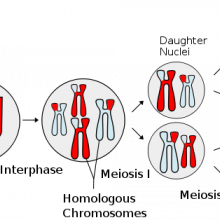
33:20 - Meiotic matchmaking: how cells tell their chromosomes apart
Meiotic matchmaking: how cells tell their chromosomes apart
A way in which each of a pair of chromosomes can identify its opposite equivalent has been unravelled by scientists 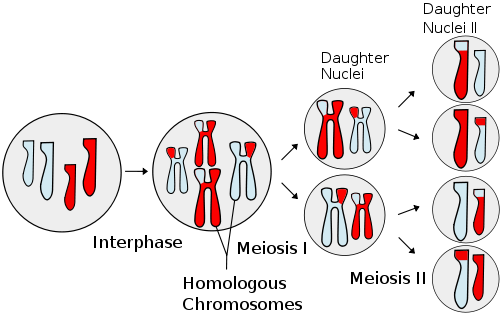 in Japan.
in Japan.
Viable eggs and sperm, known as gametes or germ cells, must contain just one of each of the pairs of chromosomes found in the majority of an organism's cells. This ensures that, when fertilisation takes place and the genetic complements of egg and sperm mix, the resulting embryo contains the correct chromosome count.
For a chromosome, correct identification of your opposite number is also critical to the generation of genetic diversity because, during the process of germ cell production, matching chromosomes exchange whole chunks of their DNA for the corresponding regions in their counterparts.
Yet, despite years of studying dividing cells, scientists still don't know how this recognition is achieved.
Now, using a yeast called Schizosaccharomyces pombe as a convenient model organism, Da-Qiao Ding, from the Advanced ICT Research Institute in Kobe, Japan, has discovered a gene that seems to play a key role in the process.
Known as sme2, it produces a so-called non-coding RNA molecule. This is a string of genetic letters read from the DNA but not used to encode a protein.
Instead, the RNA sequences from both copies of the chromosome first accumulate, probably by associating with an as-yet unidentified protein, to form a dot-like structure in the nucleus.
They then bind to their sites of origin on each chromosome, tethering the two DNA molecules together, side-by-side and in the correct alignment.
To prove that this was the case, the Japanese team tried disrupting the sme2 sequence and noted that the chromosomes ceased to pair properly at this site. Next, they moved the sme2 genetic material to another location on the chromosome and demonstrated that pairing was resumed and drammatically elevated at the new site.
However, whilst compelling, this isn't the whole story, as researcher Abby Dernberg, who is doing similar work on C. elegans nematodes and contributed a commentary on the work published this week in Science, points out.
"I don't think the process depends upon one single mechanism. But this work by Ding and her colleagues using S. pombe yeast is really important in shedding light on what was previously a totally grey area; it will help to motivate experiments in other model organisms and help to clarify the role on RNA in the process of [chromosome] recombination."
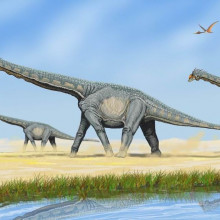
35:30 - Detecting Virus Pathology, the Rewards of Self-Disclosure and Flatulent Dinosaurs
Detecting Virus Pathology, the Rewards of Self-Disclosure and Flatulent Dinosaurs
with Julian Hiscox, University of Leeds; Hartmut Hellmer, Alfred Wegener Institute for Polar and Marine Research; Diana Tamir, Harvard University; David Wilkinson, Liverpool John Moore's University
Detecting the Disease Potential of a virus
The severity of a virus and it's effects on the body could soon be predicted using a new technique developed by scientists at the University if Leeds and published in the journal proteomics.
Julian Hiscox and colleagues are developing a barcode system where thousands of proteins within a cell infected by a virus can be analysed at once to identify any changes in the balance of these proteins and predict the pathogenic potential of the virus on the body.
The types and levels of proteins affected by infection varies between viruses allowing the team to determine a unique barcode for each type, with the effects of influenza and human respiratory syncytial virus already identified.

Julian - A cell can be seen as a battle ground for virus infection. So, you've got the virus coming in on the one hand trying to destroy the cell and make more virus and then the cell on the other hand is trying to stop that virus from doing its nasty work. We're able to capture a snapshot of that battle and then work out from the proteins we've studied, whether the battle is going to go in favour of the virus or in favour of the cell. Effectively it allows you to develop a diagnostic tool to work out whether something is going to be of a serious clinical nature or not.
---
Ice Sheet stability in Antarctica
A new weak spot has been identified in the west Antarctic ice sheet which could result in a sea level rise of up to 4mm per year.
Writing in
Nature, Hartmut Hellmer from the Alfred Wegener Institute for Polar and Marine Research modelled air temperatures and ocean currents in the widdel sea, a region of Antarctica previously thought not to affect nearby ice shelves, and found that rising air temperatures and an increase in warm ocean currents flowing in towards the filchner-ronne ice shelf could cause the ice shelf to melt and become more mobile.
Hartmut - What we see is that by the year 2070, the coastal current with temperatures like today will be redirected and enter the Filchner-Ronne Ice Shelf cavity. This will cause an increase in basal melting, this basal melting will reduce the buttressing of the ice shelf. The ice shelf will accelerate and that allows the drainage of more ice from inland. The major implication of this draining of inland ice is sea level rise.
---
Let's talk about Me
Sharing personal thoughts and views with others activates reward centres in the brain, according to scientists at Harvard University.
Working with human volunteers and publishing in the journal
PNAS, Diana Tamir monitored brain activity in participants as they answered questions about their personal opinions as well as the opinions of others. She found that as volunteers spoke about themselves, the brain's nucleus accumbens and ventral tegmental area, which are both associated with reward, became active.
The team also found there was greater reward stimulation when volunteers thought their views would be shared and they also turned down monetary rewards in exchange for talking about themselves rather than others.
Diana - In everyday life, we see that humans engage in self-disclosure. They do this in naturalistic conversation, they do it over the internet. We know already that humans are an inherently social creature and I think this sheds light onto one aspect of our social behaviour which is the way in which we interact with other people. We're highly motivated to share information about ourselves with other people and I think it's kind of the give and take of sharing information about yourself and receiving information from other people that helps us to form social bonds, and to basically engage in a highly social world.
---
Flatulent Dinosaurs
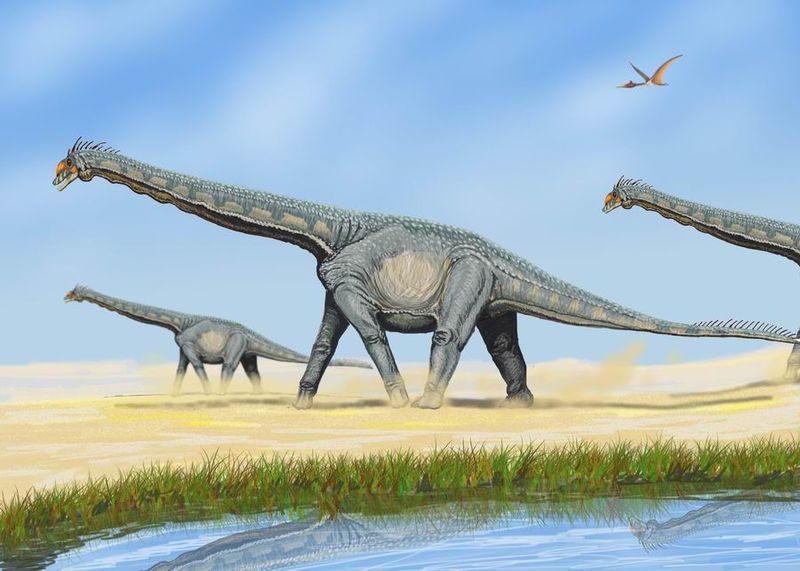 And Finally, Dinosaurs could have greatly warmed up the planet during their existence, due to their flatulence.
And Finally, Dinosaurs could have greatly warmed up the planet during their existence, due to their flatulence.
David Wilkinson from Liverpool John Moore's University calculated the potential methane output of sauropods - an order of large herbivorous dinosaurs which includes brontosaurus, by scaling up the annual levels of this greenhouse gas currently produced by the digestive tract of cows.
The team estimated the sauropods would have generated 520 million tonnes of methane each year, due to the large populations of microbes living inside them, which would have caused significant warming of the planet.
David - The microbes living in sauropod dinosaurs, another large herbivorous dinosaurs, could've been producing so much methane that it might be having an effect on the way that the actual climate of the planet worked. And this is just an extraordinary idea that little microbes in giant dinosaurs could be having a measurable effect on the workings of the whole planet's climate.
That work was published in the journal
Current Biology.

40:15 - Unearthing our History with Tephra Ash - Planet Earth Online
Unearthing our History with Tephra Ash - Planet Earth Online
with Dr Christine Lane and Victoria Cullen, University of Oxford
When a volcano explodes it ejects material ranging from rocks the size of cars to the smallest particles of ash. This ash can travel thousands of miles forming an invisible layer on the landscape, and by studying these microscopic grains scientists can date archaeological sites and this can help to clarify the effects of environmental and climatic change or even determine the movement of the human population within the last 100,000 years.
Well, Sue Nelson met up with Dr Christine Lane and Victoria Cullen at the University of Oxford's Research Laboratory for Archaeology to Christine began by showing some of the variety of material collected from a volcano...
Christine Lane - These are some samples that I collected in the field from various places which are from close to volcanic sources so a bit different to what we look at normally. One of them is a pumice, a bit like you would use in the bath, a very light rock full of air.
This rock is what we call an obsidian and it's actually made of exactly the same material as this pumice, it's glass, but it's got no air bubbles in it so it's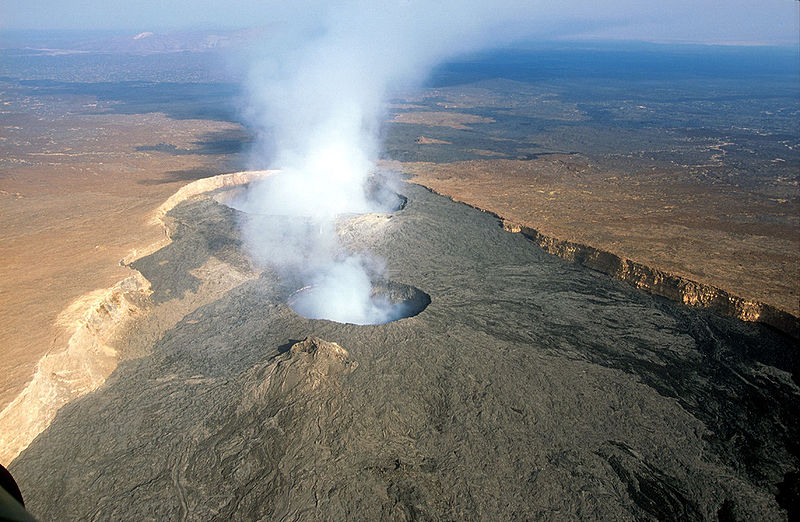 really heavy and it's much denser. What we're looking at in the lab here is the same material but it's travelled maybe thousands up to maybe three to five thousand kilometres from the source. So what we're looking at now is volcanic ash and you can see it looks much more like dust, just particles of dust or very small grains like sand size grains.
really heavy and it's much denser. What we're looking at in the lab here is the same material but it's travelled maybe thousands up to maybe three to five thousand kilometres from the source. So what we're looking at now is volcanic ash and you can see it looks much more like dust, just particles of dust or very small grains like sand size grains.
Sue Nelson - And do you have a specific name for this scale, this size of ash?
Christine Lane - All material erupted from a volcano when it has erupted explosively we call tephra and tephra is actually the Greek word for ash.
Sue Nelson - Victoria, you're going to show me aren't you exactly what this looks like.
Victoria Cullen - As Christine says it is actually glass and if you can imagine when you break a glass in your house it fractures in very distinct ways, very sharp edges and in some locations you get these bubbles as well which also kept all the glass shards, so if I get some slides out for you know we can actually look at what it looks like down a microscope. If I get you to look down there and you can see some very pinky purply looking shards of glass...
Sue Nelson - Do you know it reminds me of a child's kaleidoscope.
Victoria Cullen - If you were to find this in an archaeological environmental site you wouldn't actually be able to see if physically looking at the site, it's invisible to the naked eye. So this is why it's called cryptotephra or hidden secret tephra also known as microtephra. So when we look at certain sites because it's travelled so far, it's so fine, it's so small, when it is deposited it is just invisible to the naked eye. And then they come under the microscope and actually look if tephra is there in the first place.
Sue Nelson - So now that we know, obviously, that we've got tephra where do you go from here?
Victoria Cullen - We take them down to the microprobe and we analyse them for their chemistry. Every glass from a single eruption has one composition, one chemical composition, which is frozen at the time of the explosion and that composition acts like a fingerprint so we can identify from a tephra, the composition of a tephra shard, which eruption it came from.
Sue Nelson - This looks like a giant microscope effectively - more than a metre high but with computer screens on either side and a console.
Victoria Cullen - Yes, this is our electron microprobe. It is like a giant microscope but it works at much higher resolution, but it also has four different, what we call spectrometers, and these are effectively the detectors that record the composition of the material that we put in there.
If I choose a little grain to focus in on we can now on the computer console we can have a look at that here - and it looks quite complicated because there's a lot of different columns on it but the one we want to look at is this column here which is the weight percent oxide and this tells us for each element...
Sue Nelson - I can see there it's sodium, magnesium, aluminium, silicon. These are all in ash?
Victoria Cullen - Yeah, these are just what we call the major and minor elements, so these are the main constituents of this ash. There are other trace elements in there. So you can see that the greatest composition is silicea, there are silicate materials like all volcanic rock, so silica, aluminum, sodium, iron and potassium and sometimes calcium are the main elements that we're measuring.
Sue Nelson - And what can you actually learn from analysing these bits of ash, this tephra.
Victoria Cullen - We're looking in records where we have a story already, so we might have an archaeological site which tells a story of what the population in that site had been doing, when they've been there, what sort of behaviour they've been doing and what tools they've been making.
Or we might be working in an environmental records, so sediments accumulated in the bottom of the lake over time which record changes in vegetation or the landscape around the lake basin. And by finding these tephra layers or the same tephra layers in different sites we can link up those records. So where we have a population in a cave and we find evidence then just below a tephra layer, if we find the same tephra layer in a lake record that tells us what the climate was doing at the time that eruption took place we can infer that that was also the climate at the time of that that population was there. So we're using them as marker layers to transfer climatic and environmental information between sites.
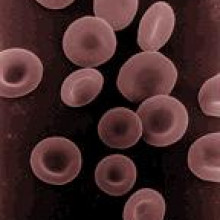
45:30 - Inflammation in Chronic Fatigue
Inflammation in Chronic Fatigue
with Dr. Abhijit Chaudhuri, Queen's Hospital, Romford and Professor Hugh Perry, Southampton University
Louise - Think back to the last time you had the flu. You probably had some muscle pain and a bad headache, felt completely exhausted, and you might even have had trouble thinking straight. Most people get over the flu and other viral infections including glandular fever in a few weeks or so. But for a few people, those symptoms continue for months and years afterwards, becoming chronic fatigue syndrome. Not everyone with chronic fatigue syndrome has a viral infection before they develop the disease, but many patients do, and it is often the flu or glandular fever. And although chronic fatigue syndrome was first defined in 1988, we still don't know how, or why, these viral infections seem to be able to trigger the condition. And in fact, we have very little idea of what's happening in patients' bodies to cause their symptoms. Post mortem studies are one of the best places to start. Now, a team including Dr. Dominic O'Donovan from Addenbrooke's Hospital in Cambridge and Dr. Abhijit Chaudhuri from Queen's Hospital in Romford has looked at the nervous systems of four patients who suffered from chronic fatigue syndrome. Here's what Dr. Chaudhuri has to say.
Abhijit - It is quite clear that there is an abnormality that is directed towards specific parts of nervous system.
Louise - So, what abnormalities did they find? In the first patient Dr. O'Donovan examined, he found large numbers of deposits called corpora amylacea spread throughout the brain and spinal cord. Professor Perry is the professor of experimental neuropathology at Southampton University and although he wasn't involved in the study, he has given us his opinion of the findings.
Hugh - Corpora amylacea are little deposits that are seen in the brain of quite a lot of people who have different types of neurodegenerative disease. Precisely what their significance is, I think is really unclear, except that they are usually associated with tissue degeneration. So they could be the deposits if you like, evidence of a degeneration process.
Louise - This finding suggests that nerve cells in the patient's brain and spinal cord were being damaged or destroyed while he was still alive. But it tells us nothing about what was causing that damage. The next patient the team looked at might provide the answer. There was inflammation in the dorsal root ganglia. These are structures near where the sensory nerves enter the spinal cord and normally, they only contain nerve cells and a few supporting structures. But Dr. O'Donovan found immune cells infiltrating these ganglia and these immune cells, which are called cytotoxic T cells, normally kill other cells in the body in order to control viral infections or to remove damaged cells. Previous work has shown that patients with chronic fatigue syndrome often have more of these T cells in their blood. But what does it mean if they're infiltrating the dorsal root ganglia? Professor Perry again...
 Hugh - The dorsal root ganglia are the neurons that convey sensory information into the spinal cord and that sensory information includes pain, temperature, pressure, and so forth, where possibly pain information is the most important of all in this context, as we know that there are many people with CFS who complain of pain in their extremities. So, to then find around those neurons evidence of inflammation, which is what the T cells are telling us, is there's some sort of inflammatory response, is of itself very interesting.
Hugh - The dorsal root ganglia are the neurons that convey sensory information into the spinal cord and that sensory information includes pain, temperature, pressure, and so forth, where possibly pain information is the most important of all in this context, as we know that there are many people with CFS who complain of pain in their extremities. So, to then find around those neurons evidence of inflammation, which is what the T cells are telling us, is there's some sort of inflammatory response, is of itself very interesting.
Louise - Both Professor Perry and Dr. O'Donovan agree that this inflammation could be causing referred pain - meaning the muscle and joint pain people with chronic fatigue syndrome often experience could actually be the result of their own immune systems attacking these nerves in the dorsal root ganglia. And when Dr. O'Donovan stained the dorsal root ganglia of two other patients to detect T cells, he found the same inflammation, although milder. So, all the chronic fatigue patients included in this study had either active inflammation in their peripheral nervous system or signs of a degenerative process in their spinal cord and brain. But it's not clear how, or if, the inflammation is related to the degeneration found in that first patient, particularly as they're affecting different parts of the nervous system. And with only four patients, this is a very small study and much more work is needed before we can be sure what these preliminary findings might mean. In particular, it is very important that we compare patients with chronic fatigue syndrome with people who do not have the disease. But this part of the nervous system is not normally examined in detail during a post mortem. Nonetheless, these results could be an interesting starting point for future research as Dr. Chaudhuri points out...
Abhijit - The fact that we are seeing an abnormality should persuade us to undertake more focused research into the neuroimmunological aspects of the disease.
Louise - And could the fact that T cells are involved in controlling viral infection such as glandular fever be the link between these infections and chronic fatigue syndrome? We'll just have to wait and see.
How do I know if I have chronic fatigue syndrome?
Yes, I think doctors not believing in this illness is still very common which I find surprising actually, given the evidence, given that the Chief Medical Officer a long time ago said it was a real illness and needs to be taken seriously and has given national guidance on what to do about this. But even so, we know that only 52 % of GPs feel confident to making a diagnosis and I think we still need to do a lot of awareness raising.
If you're feeling tired, what should you do? Well, first of all remember, it's only tiredness that actually stops you doing stuff. So, most of us, if we're doing a lot of things are going to feel tired so this is tiredness that is really awful and will stop you going to work, going to school, doing socialising, or doing sport. If you think you might have chronic fatigue syndrome, then the national guidance is that you should have a range of screening blood to exclude other illnesses such as leukaemia or thyroid disease. You should go and see a doctor to exclude other causes such as depression, and so on. And if all of those other illnesses are rules out and you fit the criteria for chronic fatigue syndrome then you've probably got chronic fatigue syndrome.
Where can I get help with chronic fatigue syndrome?
Yes, there's a lot of centres, especially for adults. Not so many for children. The Action for ME is one of the adult charities, and it has a list of all the centres and a map so you can actually click on them and find out where your nearest centre is.
Why has it taken so long to accept chronic fatigue syndrome is an illness?
It's hard to understand why that is when you see so many people suffering with this, it's a stigmatising illness. I think a lot of people don't understand it because they don't necessarily see when the person's unwell. So, if you remember I said, it's a very fluctuating illness. So people often see their colleagues or their friends on good days, and don't see them on bad days, and that makes it much harder to accept. But also, we don't have a clear understanding of what causes it and we don't have a medicine to give it, and that sort of vagueness makes it much harder for people to really believe in it.
Can exercising too much give you chronic fatigue syndrome?
Esther - That's a great question. This illness is much more common in athletes and in fact, a teenager once told me that, she was training for the Olympics, 20% of Olympiads had had it. I don't actually know if that's true or not, but certainly, if you are doing an awful lot of exercise and not allowing yourself time to recover, I think you are at increased risk of developing it. My service for children is in Bath and we see a lot of athletes with this illness.
Chris - But kids don't get told to stop running around because they might get too tired.
Esther - No, of course, and they shouldn't be told to stop running around. We all know that children aren't doing enough exercise. But when a child gets a chronic fatigue syndrome, it's very, very difficult to treat when they're younger children because running around is so natural. So, on a good day, they'll do loads and loads of running and on a bad day, they can't get out of bed.

55:06 - Why do toenails smell like cheese?
Why do toenails smell like cheese?
Hannah Critchlow put this question to microbiologist Professor Kevin Kerr, from Harrogate District Hospital...
Well, you could turn the question around the other way and ask why do cheeses smell like feet? And if you did, you'll come up with the same answer. And the answer is, bacteria - bacteria called Brevibacteria, which are used to ripen or mature certain types of cheeses can also be found growing harmlessly on the skin of humans especially areas where it's warm and moist such as sweaty feet. As the bacteria grow, they produce compounds which smell, well, cheesy and the chemicals responsible for this powerful pungent odour are sulphur containing compounds known as S-methyl thioesters.
If you've eaten asparagus, you may well find that your wee smells funny too and again, it's those S-methyl thioesters that you've got to thank, or blame, for your smelly wee. You may find something that actually looks like cheese underneath your toenails. So, does this mean that our bacterial friend, Brevibacterium is actually making cheese under your nails? Well, it may look like cheese, but it certainly wouldn't taste like cheese because what's going on here is that you've probably got a fungal infection in your nail, and the name for that is onychomycosis. Onychomycosis can be tricky to treat, so it's best to see your family doctor to discuss the available treatment options.
Hannah - And onychomycosis toenail infections are caused by fungi known as dermatophytes. These dastardly dermatophytes produce an enzyme which acts on the nail. Bad news for the nail, but good news for the fungus, because an enzyme called keratinase breaks down the keratin in the nail to provide tasty treats for the dermatophytes. So, the cheesy appearance, the yellow and thickening nail represents the damage done to the nail by the fungus feasting on it. But the cheesy aroma coming from fetid feet is from Brevibacterium festering between sweaty unwashed toes and producing stinky S-methyl thioesters. And you are likely to get both the Brevibacterium cheesy pong in combination with the fungi eating hardened toenail as both seem to like warm, moist environments.










Comments
Add a comment